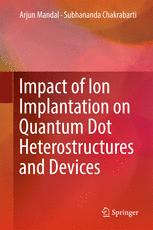

Most ebook files are in PDF format, so you can easily read them using various software such as Foxit Reader or directly on the Google Chrome browser.
Some ebook files are released by publishers in other formats such as .awz, .mobi, .epub, .fb2, etc. You may need to install specific software to read these formats on mobile/PC, such as Calibre.
Please read the tutorial at this link: https://ebookbell.com/faq
We offer FREE conversion to the popular formats you request; however, this may take some time. Therefore, right after payment, please email us, and we will try to provide the service as quickly as possible.
For some exceptional file formats or broken links (if any), please refrain from opening any disputes. Instead, email us first, and we will try to assist within a maximum of 6 hours.
EbookBell Team

4.0
46 reviewsThis book looks at the effects of ion implantation as an effective post-growth technique to improve the material properties, and ultimately, the device performance of In(Ga)As/GaAs quantum dot (QD) heterostructures. Over the past two decades, In(Ga)As/GaAs-based QD heterostructures have marked their superiority, particularly for application in lasers and photodetectors. Several in-situ and ex-situ techniques that improve material quality and device performance have already been reported. These techniques are necessary to maintain dot density and dot size uniformity in QD heterostructures and also to improve the material quality of heterostructures by removing defects from the system. While rapid thermal annealing, pulsed laser annealing and the hydrogen passivation technique have been popular as post-growth methods, ion implantation had not been explored largely as a post-growth method for improving the material properties of In(Ga)As/GaAs QD heterostructures. This work attempts to remedy this gap in the literature. The work also looks at introduction of a capping layer of quaternary alloy InAlGaAs over these In(Ga)As/GaAs QDs to achieve better QD characteristics. The contents of this volume will prove useful to researchers and professionals involved in the study of QDs and QD-based devices.